Google Test New 20Gbps Laser Broadband Link at up to 20km
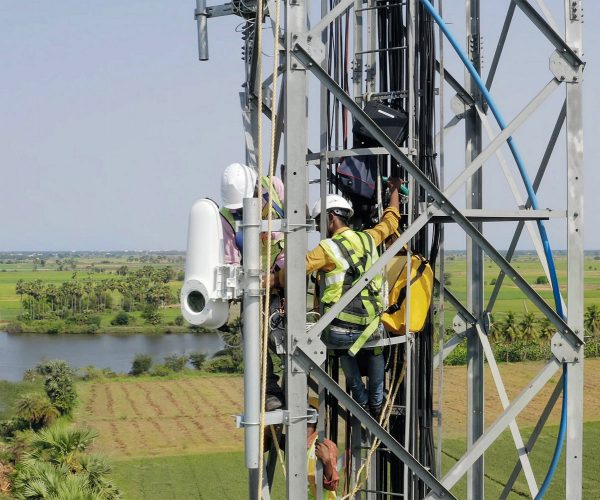
The team working on Project Taara at Google’s X technology lab have successfully overcome traditional challenges with signal reliability to demonstrate a new laser-based wireless optical communications link that can deliver data at speeds of up to 20Gbps (Gigabits per second) over distances of up to 20 kilometres.
Sending data through the open air at high-speed using lasers is nothing new, but doing anything like this over much longer distances has been known to run into problems with signal reliability, which can be compromised by changes in the conditions, such as fog and haze, or interruptions like birds flying in front of the signal. Even monkeys or high winds jostling the terminals were issues that have had to be overcome.
On top of that, it’s incredibly difficult to point a small beam of light – the width of a chopstick – accurately enough to hit a 5 centimetre target that’s 10 kilometres away or more. But Google’s failed Project Loon programme (i.e. broadband and mobile delivery via stratospheric balloons) had already developed some solutions for this, which needed to maintain laser links between balloons that could be as much as 100km apart.
Advertisement
The Project Taara team thus wondered whether they could take those technologies and adapt them to work on the ground (conditions at this level are much more challenging) in order to solve some real-world connectivity problems, albeit while sacrificing a small amount of signal reliability. Turns out, they can.
The key was developing a laser link that can adapt to changing conditions, both in the atmosphere and otherwise. Taara’s terminals can search for each other, detect the other’s beam of light, and lock-in like a handshake to create a high-bandwidth connection. The beam is thus designed to move, which works by harnessing atmospheric sensing, mirror controls and motion detection capabilities (i.e. automatically adjusting to changes in the environment to maintain this precise connection).
Baris Erkmen, Director of Engineering for Taara, said:
“By automatically adjusting things like the amount of laser power we’re transmitting, or how we’re processing bits on the fly, the reliability of our links has greatly improved. These techniques combined with better pointing and tracking capabilities has meant that when Taara’s beam has been affected by haze, light rain, or birds (or a curious monkey) we’ve not seen any service interruptions.”
The latest and most successful demonstration was designed to “bridge a particularly stubborn connectivity gap” between the city of Brazzaville (Republic of the Congo) and Kinshasa (Democratic Republic of Congo). Separated by the Congo River, the world’s deepest and second-fastest river, Brazzaville and Kinshasa are only 4.8km apart – yet connectivity is five times more expensive in Kinshasa because the fibre connection has to travel more than 400km to route around the river.

Advertisement
After installing Taara’s links to beam connectivity over the river, the team were able to transfer 700TB (TeraBytes) of data over a period of 20 days with 99.9% availability. The technology is theoretically capable of achieving data speeds of up to 20Gbps (Gigabits per second) and at distances of up to 20km, although the project site suggests that speeds of 100Gbps or more may be possible (most likely over shorter distances).
However, the team does admit that “places like foggy San Francisco may never be an ideal spot” for the technology they’ve developed, although there are many places around the world with ideal weather conditions for such a solution. Project Taara has developed network planning tools that can estimate link availability based on factors like weather, so they can install it in places where it’s best suited.
Interestingly, northern Scotland and Northern Ireland look like they might be good candidates for achieving high availability – over distances of c.10km – with such an approach. Below is an interesting video from one of Project Taraa’s earlier deployments in Andhra Pradesh, India. It’s clear from the terminals that this is using a much earlier prototype.
Mark is a professional technology writer, IT consultant and computer engineer from Dorset (England), he also founded ISPreview in 1999 and enjoys analysing the latest telecoms and broadband developments. Find me on X (Twitter), Mastodon, Facebook, BlueSky, Threads.net and Linkedin.
« RootMetrics Name Top 13 UK Cities for 5G Speed and Availability
Price Cuts and Speed Boosts at London ISP Community Fibre »





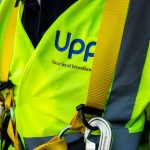


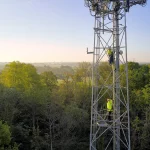




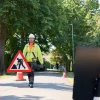
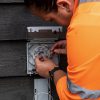
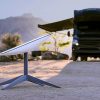






































There is (or at least was) fibre under the Congo river between the two cities, but I am not sure if it ever got used because of bureaucratic wrangling on one side or the other, as it crosses an international border.
Internet traffic from Brazzaville to Kinshasa typically routes via London.
If they connected this link up to the local Internet Exchanges, and the local networks peered with each other, this could help improve interconnectivity significantly.
Great until a flock of birds fly through the beam.
Oh and snow is a serious problem as well.
What advantages does this have over RF i.e. microwave? Speed or bandwidth or both?
You can’t jam it unless you physically put something in the way, which then becomes obvious.
Congratulations to entire team involved in achieving this. This can also be very useful for last mile deliveries as well where not so reliable aerial cables ( under ground not feasible due to hilly terrain_ landslide prone, or no ROW from authority, or over years required to get permission ) are operational in linear. Alternatively primary path can be such LASER links and secondary being unreliable linear fiber with switching between the 2.
Besides CITY MESH can be developed with such high capacity links supporting upto 20km.
I need a laser based digital link that can be used for High speed digital block level data
transmission. 50-100 yards between points. What kind of bandwidth has been tested for that distance?